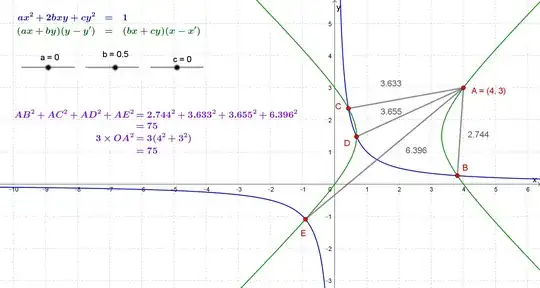Consider the rectangular hyperbola $xy = c^2$. Normals at points $P,Q,R$ and $S$ on the curve are concurrent, and meet at point $O(h,k)$. Find $OP^2 + OQ^2 + OR^2 + OS^2$.
I managed to solve the problem using coordinate geometry, and I'm hoping to discover rather interesting methods of approaching it, here on Math SE. A solution using geometry, if possible would be great. (Of course, other methods are welcome too!)
Also, is the sum $OP^2 + OQ^2 + OR^2 + OS^2$ constant for any rectangular hyperbola, or is it something special about $xy = c^2$?
It is worth noting that a geometrical solution would probably also help us understand whether or not the result is general - addressing the second query.
Thanks a lot!
P.S. For the sake of completeness of this post, I shall share how I approached the particular result using coordinate geometry. First, I wrote the equation of the normal (in parametric form) to the given rectangular hyperbola, and plugged in $(h,k)$ into it (the coordinates of point $O$). What resulted was a fourth degree equation, and I used Vieta's theorem to directly evaluate the required expression, to get $3(h^2+k^2)$.
